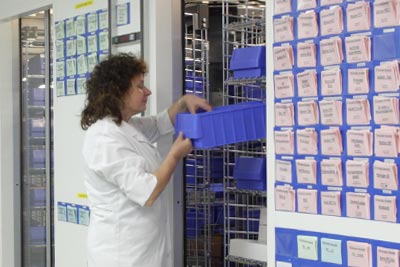 The Pfizer-BioNTech vaccine was, in many countries, the first to be approved but there was concern about how to transport and then store it, because it needs to be kept at temperatures of -70°C.
The Pfizer-BioNTech vaccine was, in many countries, the first to be approved but there was concern about how to transport and then store it, because it needs to be kept at temperatures of -70°C.
Most of the concern was directed to how pharmacies, surgeries and vaccination centres would cope with keeping large volumes of vaccine at the required temperature. This was an unprecedented process for unprecedented times.
Thankfully, the day to day cold store can be kept at a slightly higher operating temperature for chilled and frozen food and pharmaceuticals. However, this still provides daily challenges in their warehouse and supply chain process.
Why do we need cold storage?
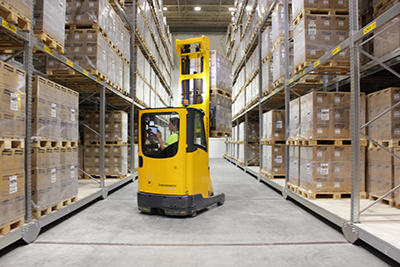 Cold storage is not a new phenomenon. We’ve been storing food at cold temperatures long before fridges and freezers were invented, understanding that by keeping produce cold it lasts longer and its quality (and safety) is maintained.
Cold storage is not a new phenomenon. We’ve been storing food at cold temperatures long before fridges and freezers were invented, understanding that by keeping produce cold it lasts longer and its quality (and safety) is maintained.
But of course, now we no longer use Victorian ice houses and larders to keep goods chilled. Cold storage on an industrial scale is a sophisticated and high-tech process, often with high levels of automation. It must be. In 2018, the global frozen food market was valued at 260.8 billion U.S. dollars. This is predicted to grow by 40% by 2026, to a forecast value of 366.3 billion dollars.
And this is just frozen food. Add to that chilled food, pharmaceutical products and other goods that need cold or chilled storage and you get an idea of the sheer scale of the cold/frozen supply chain, in which storage forms an essential part.
Cold storage warehousing
There are two main elements to a cold storage warehouse: the warehouse itself and the equipment inside, such as the racking. There is a third option, which combines both – rack-supported buildings, where the racks are part of the integral structure of the warehouse. All must play their part in keeping the centre at a constant temperature.
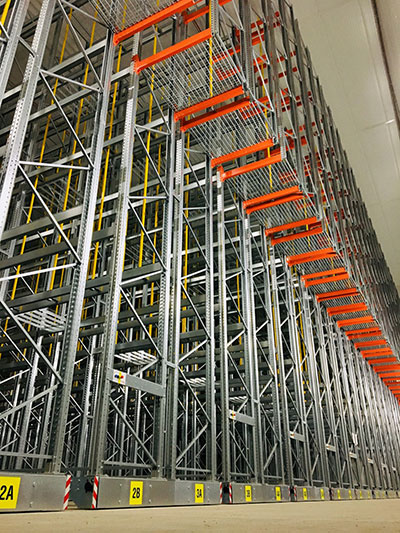 Cold storage warehousing generally falls into two categories, dictated by the temperature:
Cold storage warehousing generally falls into two categories, dictated by the temperature:
- Refrigerated, with the controlled temperature at 0 to 10 °C.
- Frozen, with the controlled temperature at -30 to 0°C.
Each has a different purpose. A cold storage warehouse aims to maintain the produce (usually food) at an optimum temperature, to stop it spoiling and to extend its life.
By contrast, a freezer warehouse must keep the product at a constant temperature to ensure there is no risk of damage or alteration to its integrity.
Choosing cold storage over freezer warehousing or vice versa will be based on the types of products to be stored.
With the governments commitment to being net zero carbon by 2050 in all sectors, this presents a particular challenge to the cold storage warehouses being built today.
Cold storage challenges and solutions
Keeping goods in cold storage in a warehouse presents some challenges which need to be addressed, including:
- Cold storage is a more expensive option than ambient temperature storage, when factoring in the cost of energy needed to maintain the cold.
- How will employees operate in sub-zero temperatures
- How can the temperature be constant, not just during storage but at the point where goods are received or despatched.
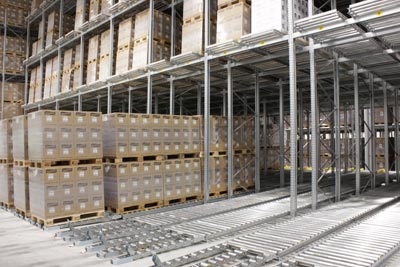 Many of these challenges can be overcome by carefully selecting equipment - such as racking and conveyors – which will optimise use of space, ensuring streamlined services. Automation and semi-automation also reduce overheads in terms of labour costs.
Many of these challenges can be overcome by carefully selecting equipment - such as racking and conveyors – which will optimise use of space, ensuring streamlined services. Automation and semi-automation also reduce overheads in terms of labour costs.
Popular cold warehouse storage solutions include mobile pallet racking, which maximises floor space by having only one operating aisle. This can save 40% floor space from conventional pallet racking and increase overall storage capacity by 80%.
Another option is drive-in racking, which allows for large quantities to be stored, again making more efficient use of space by up to 90%. It is ideal for cold and chilled storage goods.
A huge focus on sustainability means there is increased investment in the development of AGV operated vehicles in cold store environments to make the warehouses as efficient as possible. Adopting a pallet shuttle system reduces manpower and the need for forklift trucks and is ideally suited to warehousing with low SKU levels, needing an efficient yet compact storage system.
For cold storage warehouses with high product turnover, pallet flow solutions allow for fast access, using up to 60% less flow space.
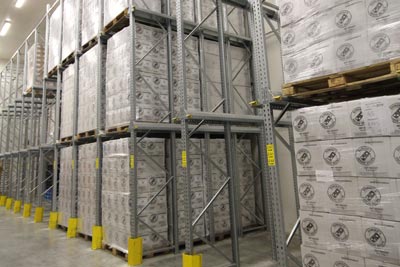 Other factors for successful cold storage
Other factors for successful cold storage
There are many considerations over and above the warehouse itself and the equipment needed.
For example, entrances and exits where goods are received and dispatched must be cooled to the correct temperature. It is common to have a secure airlock system, with two doors never opened at the same time, which help prevent cold escaping or condensation or ice building up.
Good ventilation is essential in maintaining a constant temperature throughout, again helping to avoid ice or condensation.
We can advise on all these factors, as well as the right storage solutions for your cold storage warehouse, including automation and semi-automation. To talk to us about cold storage warehousing, please get in touch. We offer quality solutions and are proud to be members of the UK’s Cold Chain Federation, as well as members of equivalent bodies in other countries.